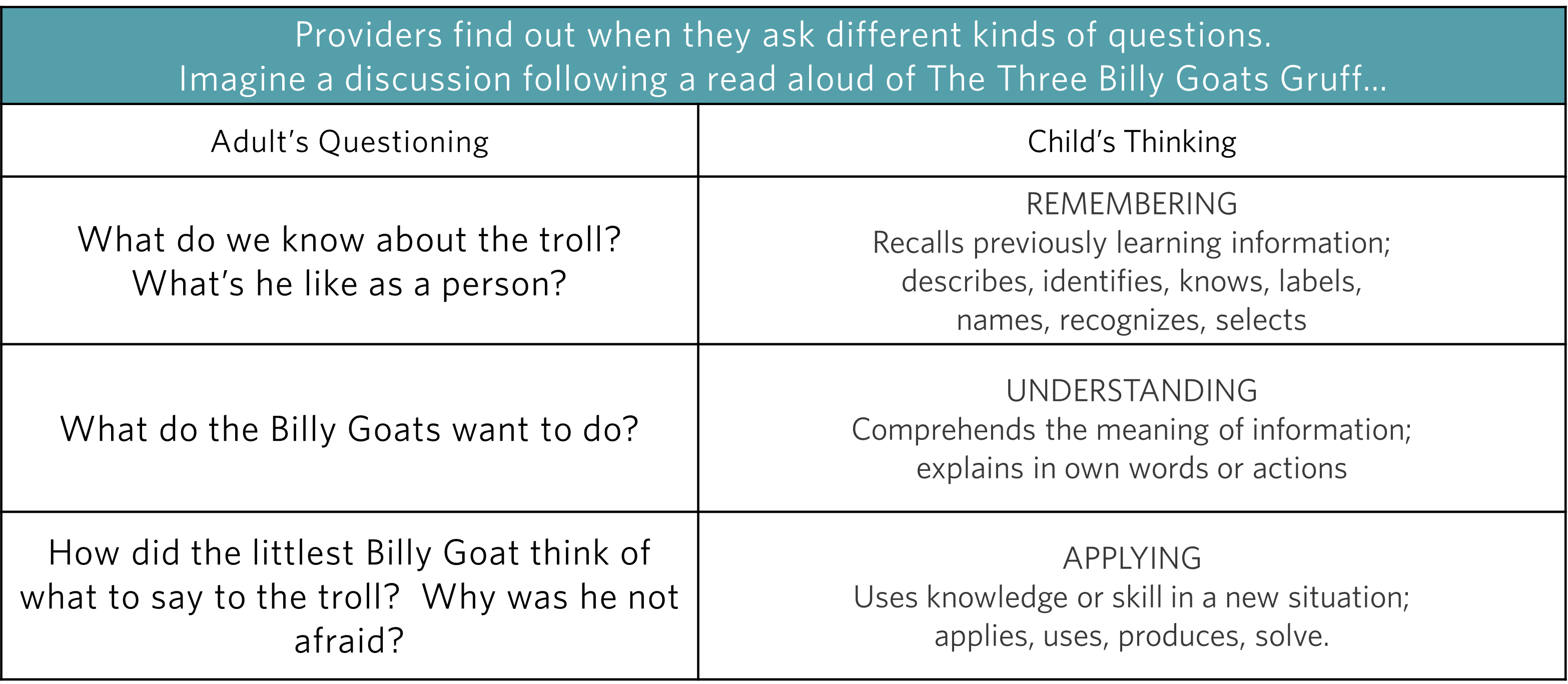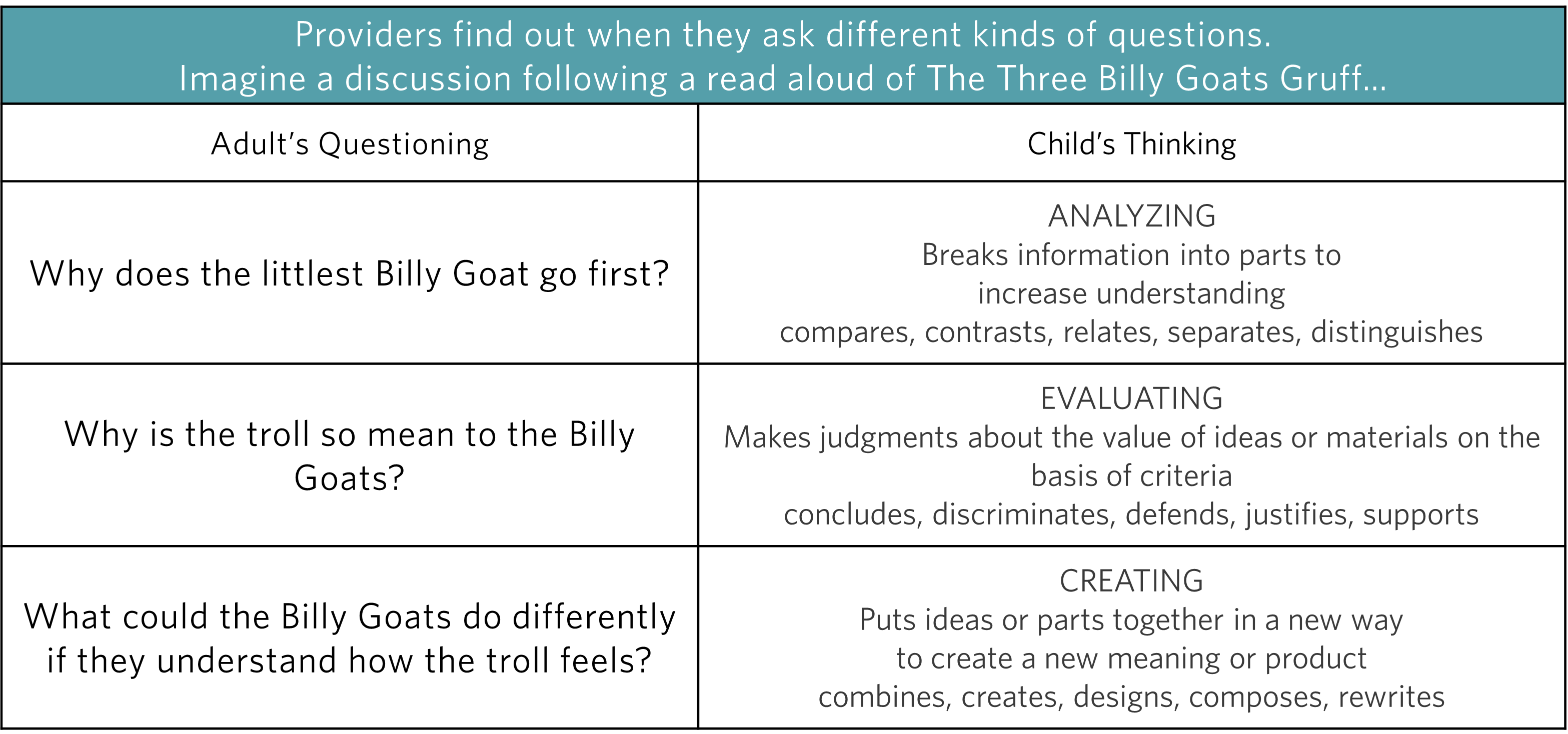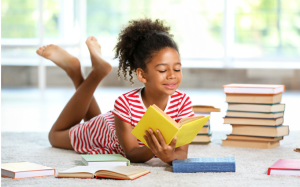There are so many benefits to reading with children…
But it can be difficult to keep a group of children engaged! Here are a few ways to make your story times more likely to bring children in and offer them the benefits that books can bring.
- Choose high quality literature. If you’re bored reading it, they’ll be bored listening. Look for interesting illustrations, distinctive characters, fun rhythm and rhyme, and relatable elements.
- Keep the books that get a good response, and shelve the ones that don’t capture their interest yet. Rotate books out when they’re getting stale and keep trying.
- Use your local library to keep an active rotation and try out new authors, illustrators, and genres. Plus, children’s librarians may have suggestions for books to read next.
- Books belong everywhere. Yes, a bookshelf or basket of books is important for children to have access to, but keep books about physics and great buildings with the blocks, keep books about plants in a waterproof box outside, and keep cookbooks with your play kitchen.
- Story time isn’t a set time— it’s whenever someone wants to read! Allowing children to engage with books when they’re interested and ready, and children who are allowed to freely choose when to listen to a story will enjoy them more. Plus, you can’t always tell who’s paying attention just based on where their body is– plenty of educators have heard a child across the room join in the chorus of a story.
- The last page isn’t a finish line: The goal is to engage children in the text. Whether that means dropping a book that the children aren’t interested in, or talking with them for 5 or 10 minutes about a single page, remember that it isn’t a race to the end. When children are asking questions or going off on tangents related to the subject or relating the story to their own experiences, they are internalizing the richness of text and its use as a tool for communication and connection.
What’s your favorite book to read with a group of children?
We know that babies learn language from being spoken and sung to, but new research states that young babies learn more from the rhythm and the way we speak than the individual sounds we’re making.
Why reading nursery rhymes and singing to babies may help them to learn language | University of Cambridge
This is just more reason to keep singing and reading to even the youngest babies throughout the day!
Remember, singing to the baby in front of you is much more powerful than playing recorded music.
“High cognitive scores during infant-directed singing suggested that engagement through song is just as effective as book reading or toy play in maintaining infant attention, and far more effective than listening to recorded music,” said [researcher Shannon] de l’Etoile. Mothers and infants connect through song | ScienceDaily
To find out what children are thinking, it is very important that we talk with them, and ask them questions. Asking the right kinds of questions can give you a lot of information about how children are processing ideas, and how to encourage them to think more deeply and carefully about whatever you are discussing with them.
Here is an examples of questions that adults might ask children to prompt their thinking about the story The Three Billy Goats Gruff.
Use the following PDF chart to guide you in developing thoughtful questions to support a child’s thinking processes.
Supporting Thinking Processes
This resource offers tips for choosing culturally responsive books for children and how to check for stereotyping and bias. There is a worksheet included that can be used when evaluating a children’s book and links to other helpful resources. Check out the Head Start National Center on Cultural and Linguistic Responsiveness for more information and resources.
Selecting Culturally Appropriate Books Resource
Read books to infants while you are holding them on your lap or be sure he/she can see the book. Any book with pictures will do, but board books work well for infants who often want to grab the pages or put the book in their mouth. Read for as long as the infant seems interested and don’t worry if you don’t make it all the way through the book. Allow the infant to touch and hold the book and read the same books many times. As infants gain more motor control allow them to turn the pages.
For a list of books by age click here.
Goal: To begin supporting infant’s language development and book knowledge.
Set up a space where children can create cards and letters for each other. You can include different types and sizes of paper and envelopes, stickers, stamps/stampers, and a list of the names of the children. Encourage children to draw and write or dictate messages to one another. You can create a mailbox space using a box with dividers or hanging shoe storage and label a spot for each child.

Goal: Children will communicate with each other with drawing and writing.
If you would like to learn more about emergent writing check out the Learn, Share, and Grow series about writing development on the Professional Development page.
Ask children to gather sticks (if outside) or provide Popsicle sticks or straws (if indoors). Then have children create shapes or letters using the sticks. Talk about the number of sticks you need to create specific shapes or letters and encourage the children to talk together about what they made.
Goal: Children will use sticks to create shapes and letters
A fun activity with old books or magazines is to create story cards that show a sequence. Cut out 3-6 pictures that show actions as part of a sequence of events. Glue the cut out pictures to construction paper or cards. You could laminate them or cover them with clear contact paper for extra sturdiness. Children can work individually or in small groups to place the cards into order. These sets of cards can be made available for children to choose to work on independently. If children need help you can use sequencing language (first, next, last, etc.) to support children’s vocabulary growth.
Goal: This activity supports children’s language skills and cognitive development in terms of memory, sequencing patterns, and problem solving.






